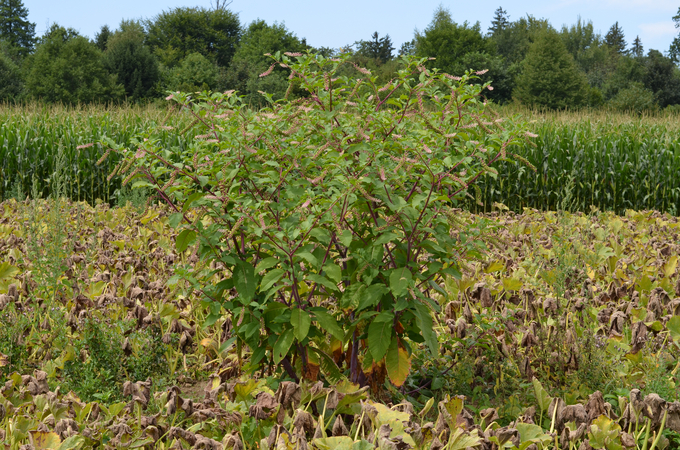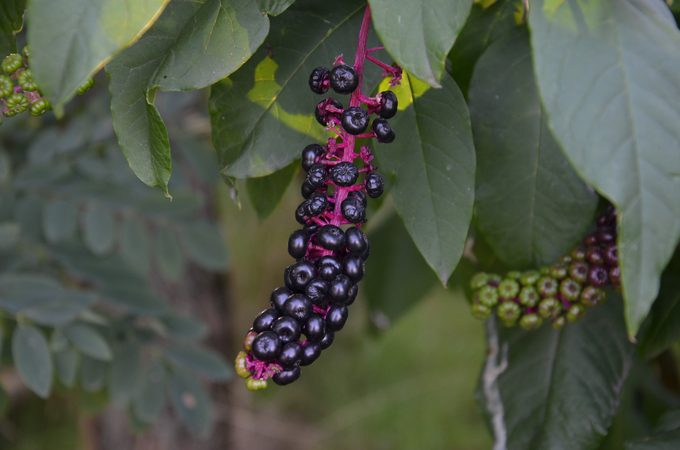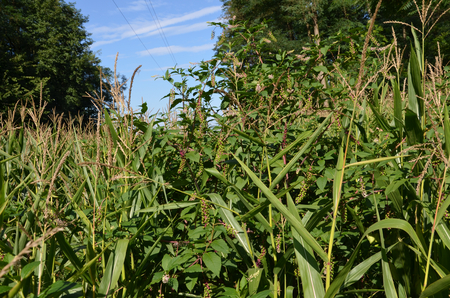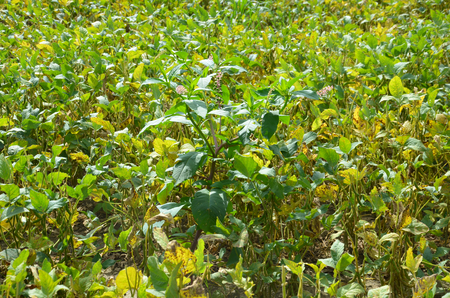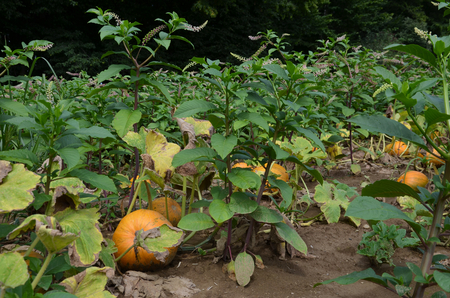American pokeweed
Pyhtolacca americana L.
Appearance
The species can grow up to 250 cm tall and is branched in the upper third. The leaves are up to 25 cm long and ovate. The shoots are often reddish. The arching overhanging inflorescences are characteristic. Each flower may produce one fruit divided into ten chambers, with one 2 to 3 mm seed per chamber. The fruits are first green, then dark red, later black, and about 8-10 mm in size.
American pokeweed can only be confused with Asian pokeweed(Phytolacca esculenta Van Houtte). Its characteristics are: rather wrinkled leaves, smaller in growth, the 7, 8 carpels are free and the berries are correspondingly deeply furrowed and, in addition, the inflorescences and fruit clusters are always erect.
Distribution
American pokeweed is originally from North America and it was introduced as an ornamental and dyeing plant. The species occurs feral mainly in southern Styria and eastern Lower Austria (Weinviertel and Marchfeld), prefers open, disturbed habitats and grows especially on forest edges, clearings and woodlots. Very rarely, arable land is also infested.
Spread
American pokeweed is a perennial turnip geophyte, which means it survives as a turnip in the soil. The plant lays adventitious buds from which numerous new shoots sprout in the spring (early April). The species also reproduces by seeds, which are eaten by birds and spread over long distances.
Prevention and control
- Emerging populations must be located and contained as quickly as possible.
- Preventing seed production is critical because further spread of pokeweed relies heavily on successful seed production and dispersal.
- Very small populations and single individuals can be removed by hand (digging, spading the beet)
- Information on herbicide efficacy is scarce. For example, glyphosate and vigor herbicides such as 2,4-D and dicamba had a suppressive effect (> 80% efficacy) in experimental studies (see list of plant protection products approved in Austria).
Specialized information
Follak S. (2021): The pokeweed - a problem in agriculture? Der Pflanzenarzt 74(6-7), 24-25.
Follak S., Schwarz M., Essl F. (2022): Notes on the occurrence of Phytolacca americana in crop fields in Austria and its potential agricultural impact. BioInvasions Records 11, 620-630.
Last updated: 10.09.2024
automatically translated
